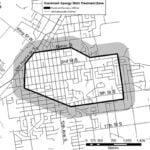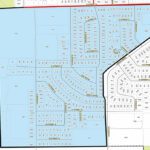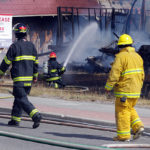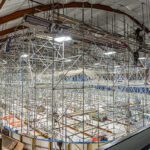Home »

MLA decries Jumbo funding request as “ridiculous use of public money”
By Ian Cobb
Columbia River-Revelstoke MLA Norm Macdonald March 25 decried the Jumbo Glacier Mountain Resort Municipality’s (JGMRM) recently tabled five-year financial plan during an exchange in the Legislature with Coralee Oakes, Minister of Community, Sport and Cultural Development.
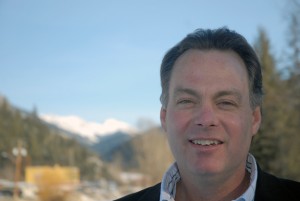
Noting that JGMRM is anticipating receiving $200,000 a year for five years in its financial plan, Macdonald said public expenditures on a private venture, even if on Crown land, is a “ridiculous use of public money.” He added his concern about such an expanse is magnified by the still non-existent presence of a major backer for the ski resort proposal.
Oakes replied that it is “speculative” of JGMRM to include $1 million in government funds over five years in its plan and government is merely following through on a 2009 request by the Regional District of East Kootenay for the incorporation of the Jumbo Resort area, located 55 km west of Invermere.
The following is a Hansard record of the exchange between MLA Macdonald and Minister Oakes.
Following a brief introduction, Macdonald stated the 2.5-decade legacy of Jumbo “probably should be one of the biggest embarrassments for this government and for this ministry. What you have is a resort municipality that was set up pre-election — 6,000 hectares of public land were given away; $250,000 from this ministry was given to a BC Liberal–appointed mayor and council, who are paid for entirely by taxpayers.
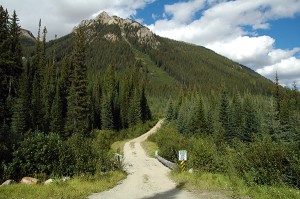
“They have the rights of any other real mayor and council. They get to go to the regional district. They get to participate in those meetings. They act entirely like a real government except this is public land. There is deer. There are bears, and there are squirrels. But there is not one person, and there is not one building, nor is there likely to be in the foreseeable future.
“We saw over the summer where everything was in place for things to move forward, and nothing took place. The fact of the matter is that there is no investor for this project. While the government has it in their brag sheet about all these big projects going on as a billion-dollar project — or a $400 million project or an $800 million project — because it changes along with the government propaganda. There actually is no investor. I guess the first question: in the time since we last raised this issue, has the minister become aware of any investor for this project?”
Oakes replied: “The Ministry of Community, Sport and Cultural Development supports local governments in setting up the land use planning and the pieces entailed around governance and pieces as such. In early May 2012 we amended the Local Government Act to clarify the province’s authority to incorporate a mountain resort municipality into that.
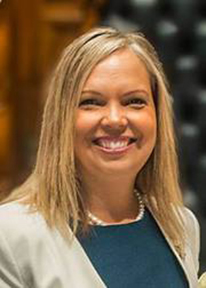
“The incorporation was requested by the Regional District of East Kootenay in 2009. It was incorporated February 19, 2013. We did appoint a three-member municipal council to oversee the operations of the municipality at the time.
“The decision to incorporate a Mountain Resort Municipality reflects government’s belief that the municipal government structure is the most appropriate model to provide the strong foundation necessary for a well-planned resort community. But the question that was asked really now goes into the developer’s realm.
“The developer, like any developer in the province of British Columbia, has a requirement to meet, such as environmental assessments and pieces like that. If they’re attracting investment, that really is the developer’s role.”
Macdonald was back on his feet immediately following. “Let’s just look at the due diligence the ministry has done here and see if it stands up to any scrutiny at all,” he began. “This is 6,000 hectares of public land. Presumably, there would be abilities to plan in that area if it had not been handed to a handpicked BC Liberal council and mayor. Then this ministry, with a budget that this minister is responsible for, spent $250,000 to achieve nothing. You would think that the most basic of questions would be: is there any chance that this project would move ahead? You would think that the minister would be slightly curious as to ask: is there actually any money to be invested to make this project go forward? The fact of the matter is, as the minister well knows since she avoided the answer, there is no money. There is no investor. Which makes this whole project a complete farce.
“Now, I would be willing to forgive the $250,000 wasted already if that was in the past, which I actually thought it was. But what we see — in documents that I’ll share with the minister put out by Jumbo Glacier Resort, bylaw 00-10, presented in one of the five-minute meetings this group that you pay for has every month — is a bylaw. It’s bylaw 00-10-2014. I’ll share it with the minister, because I see they’re looking for this document.
“I actually hope that the minister is going to say: “Hey, you’ve read this wrong” or “They’ve made a mistake.” What it shows…. I’ll ask the minister to turn, when they receive the document, to the second page. There it reads: “Jumbo Glacier Mountain Resort Municipality, the financial plan, 2014-2018.
“Since this group is responsible to follow the rules of any other municipality, they’ve put forward a bylaw that is going to be read next month. If the minister will turn and look at the financial plan, they will see that the tax revenue for 2014, 2015, 2016, 2017 and 2018 are all presented there. The tax revenue in each of those years is zero. Next we have user fees. Each of those five years — zero. We come to government transfers, and in each of the years it’s $200,000 transferred from this ministry to this; user fees — each of those five years: zero. We come to government transfers, and in each of the years it’s $200,000 transferred from this ministry to this ridiculous creation that has no investor, no prospects of moving forward. Yet the government is going to invest $1 million over the next five years.
“Will the minister please stand up and say that this is a misunderstanding? If it’s not, this is the most ridiculous use of public money that I’ve seen in a long time. Will the minister stand and tell us that the money that is here in this bylaw is some sort of a mistake and that she does not intend on investing more taxpayer money on this project? Let’s see what the minister says about that, then.”
Oakes responded, “The bylaw that was presented by the member opposite — thank you very much for bringing that forward — is speculative. It’s based… the government transfers that have been identified as the $200,000 are actually an application into the small community grant, and that is available for all municipalities. But it’s speculative. It does not guarantee that they’re going to actually receive that. That’s the first point. I would like to discuss the fact that what this ministry does is receive requests on a weekly basis around changes in local government structures in a variety of different scales. We have routine boundary matters that typically deal with small numbers of parcels to larger numbers, such as Jumbo, that affect small to large populations.
“Really, what is important to note here is, again, we received an incorporation request from the Regional District of East Kootenay in 2009. We received a request from the regional district. It is our role as the Ministry of Community, Sport and local governments to be supporting local governments when they put requests forward.
“Whether it’s a municipality… Saltspring has currently brought forward a request to review their structure. Okanagan Falls… West Fernie has brought forward a request. That is our role as the ministry — to support local governments or incorporations on how governance will best meet the needs of the citizens in the area. Again, this particular project was brought forward by the elected individuals of the Regional District of East Kootenay in 2009.”
Macdonald pressed that the existence of the JGMRM council, headed by former Village of Radium Hot Springs Mayor and RDEK board chair Greg Deck, remains a farcical entity.
“First off, as the minister knows, to muddy the water and suggest this is anything like any of the other examples she’s talking about is ridiculous, right? This is a unique situation. There is no other place in British Columbia where you have a mayor and a council looking after a community of zero people.
“The mayor doesn’t even live there, right? The mayor has walked through there, perhaps. But he doesn’t live there, and they don’t hold their meetings there because there’s no building. This is a ridiculous thing that has been set up, and to suggest that it has been asked for by the people from the area is, again, ridiculous, all right?
“The question was: is there any money from the province in this minister’s budget that is going to go into this project, going forward? They have put forward a legal document saying that $200,000 is coming. Has the minister had any discussion — or anybody in the ministry, any discussion — to suggest that that money is forthcoming from this ministry? Or can the minister categorically state here that no further money will go into this farce of a project?”
Oakes told Macdonald, “You’re using quite strong language, Member of the Opposition. And I would lead the example. There have been 12 resource towns that have been developed, using instant town provisions of the legislation, that have resulted in similar types of cases. In two of the cases there were two small hamlets in place — Houston and Port McNeill. But in all cases it was the same model of appointed council. So this has happened throughout the province of British Columbia in 12 resource towns.
“In all cases it was the same model of appointed council. This has happened throughout the province of British Columbia, in 12 resource towns. I would also suggest — and I’ve very clearly publicly stated — that they have the ability as a municipality, a resort municipality, to apply for the small community grants. That does not suggest that they will receive it, but they absolutely have the ability to apply for that funding.”
Macdonald argued it is “a ridiculous suggestion to compare this to Tumbler Ridge or anything else that you have talked about there. This is a project. There’s not coal in the ground. There’s not timber that they’re going to be cutting down with guaranteed investment. There is no investor. That should be the first question that the government would have asked before they set up this situation, so it’s nothing about at all what the minister was talking about there. This is a unique situation. Happily, it’s unique because it’s ridiculous.
“The minister can categorically say that not a penny more of taxpayer money is going to go into supporting that farce of a council, right? It’s a B.C. Liberal mayor, and it’s two others. They have spent, already, $250,000 of taxpayers’ money with nothing to show for it. If there is any sense in this government at all about using taxpayer dollars properly, the minister can say right now that until she is certain there is an investor or some hope of this moving forward, not a penny more will go in. She has within her ministry the ability to say that right now. That’s what I would like her to assure the people of British Columbia: that there is no more money wasted on this project.”
Oakes answered: “Every single situation that we deal with in British Columbia when it comes to local governments is unique. I would suggest that in 1975, when the community of Whistler was looking, they had a vision of what potentially it could bring to the province of British Columbia. I would suggest that that has been a very good opportunity for British Columbians. It has benefited as a whole. Sun Peaks in 2010 is another example of a resort municipality that has created benefit for all British Columbians. Again, the resort municipalities have the ability, as all municipalities do as local governments, to apply for the small community grants. I would like to read in a scope and a history and timeline of this project.
In March of 1991 there was a formal proposal submitted to the province and start of a competitive process to identify potential applications in this area. In 1992 to November of 1994 there was a review that was delayed pending the decision under CORE land use process that resulted in the designation for the Jumbo area which supported commercial tourism and resort development use subject to such development being capable of mitigating potential environmental impacts.
“In 1993 there was a preliminary review under the commercial alpine ski policy. In March 1993 there was an interim agreement signed by the province that provided sole proponent status and a licence of occupation required to enter into the land in order to prepare for the master plan. In July of 1995 there was an interim agreement signed by the province that provided sole proponent status and a licence of occupation required to enter into the land in order to prepare for the master plan.
“In July of 1995 to October of 2004 there was an Environmental Assessment Act review. The certificate was granted with conditions. In October of 2005 there was a judicial review of the EAO process, and the judge upheld the EA certificate. In 2006 there was a review of the draft resort master plan under the all-season resort policy. In 2006 consultation continued under the all-season resort policy with a commitment to the First Nations that a master development agreement would not be completed without the proponent until consultation was completed.
In July of 2007 the Resort Master Plan was approved by the province. In 2009 the EA certificate was extended for a further five years. In July of 2009 the Ministry of Tourism, Culture and the Arts advised the First Nations that the consultation process as per the agreement was complete, and they provided additional information about the area. The province agreed to consider the new information and consultation continued.
“On November 15, 2010 there were more presentations. The declaration says the area was sacred to the grizzly bear. In the summer of 2011 the Ministry of Forests, Lands and Natural Resource Operations visited the proposed site, met with the Shuswap and Ktunaxa and the proponent. In March 2012, approved the Master Development Agreement for Jumbo Glacier Resort under the Land Act and the Ministry of Lands, Parks and Housing Act.
“In November of 2012 the previous Minister of Community, Sport and Cultural Development announced the letters of patent approved to incorporate Jumbo as a mountain resort municipality and also appointed the three-member municipal council and the interim corporate officer.
“I did this exercise to really provide an opportunity to understand that since the 1990s this project has been working through a process. I would suggest that when one looks at Whistler and one looks at Sun Peaks and one looks at other opportunities that happened throughout the province of British Columbia, it takes the amount of work to move these types of projects forward,” Oakes said.
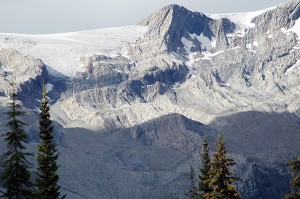
Green Party deputy leader and Oak Bay-Gordon Head MLA Andrew Weaver said he shares Macdonald’s concerns, largely because glacier skiing appears doomed as glaciers continue to recede.
“In fact, seeing as we’re talking about history since the 1990s, there’s a study by Tobias Bolch from the University of Northern British Columbia that has pointed out that since 1985 the Jumbo Glacier area has lost 15 percent of its glacier mass. As we know, this Jumbo Glacier Resort is proposing build a resort for year-round skiing. Well, I actually have here… I contacted Canada’s and, in fact, the world’s leading expert on glaciers. He’s actually done analysis on the glaciers in British Columbia, and according to his analysis… His name is Gary Clark from the University of British Columbia, a fellow of the Royal Society of Canada. With respect to MIROC RC8.5 — which is just technical — there is still ice around at 2050, maybe 30 percent relative to 2010, and virtually none at 2100. There is no wonder that there is a lack of investors showing up to invest in this, because frankly, this glacier won’t be around as this century progresses.
“My question builds on that with respect to a particular First Nation ruling that’s coming up, that’s expected very soon. The question is this: should the legal challenges either stop construction or delay the project beyond the environmental review deadline this fall, has the ministry considered the available options? If so, what are they? And what are the cost implications? Frankly, delaying this even further, for a resort that is designed to have glacier skiing on a glacier that won’t exist, is rather odd.”
Oakes concluded, “In respect to the court case, it currently is before the courts, and so we are expecting that that will come out in April. But the government is still confident that this resort will be successful, and it signaled its confidence when it approved the resort by entering into a master development agreement. With respect to cancelling or dissolving or changing the Mountain Resort Municipality, the government does not anticipate that there will be a need to dissolve the Mountain Resort Municipality.
Lead image: The old sawmill site in the Upper Jumbo Valley; the proposed location for the approximate centre of the Jumbo Glacier village. Ian Cobb/e-KNOW



